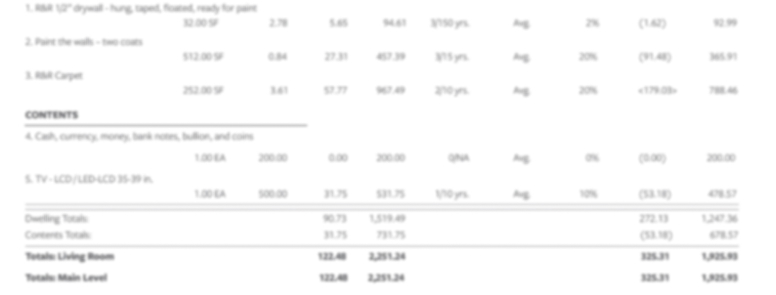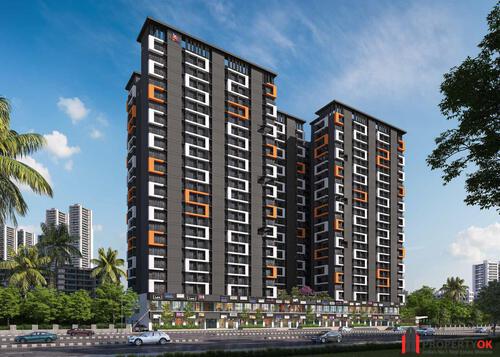Are you thinking of investing in rental property in India? Before you take the plunge, there’s one crucial factor that could make or break your investment: rental yield. It’s tempting to jump at the chance to own a property and start earning passive income, but ignoring red flags when it comes to rental yield can cost you big time.
In this blog post, we’ll delve into what rental yield is and why it matters for investors in the Indian real estate market. So grab a cup of coffee, and let’s explore how you can maximize your returns while minimizing risks!
Experience the difference: Connect with the top real estate consultancy in Mumbai and discover the benefits of personalized service and expert advice!

What is Rental Yield?
When it comes to real estate investing, rental yield is everything. Simply put, it’s the amount of money you can expect to make each year on your investment property, expressed as a percentage of the purchase price.
For example, let’s say you buy a property for $100,000 and rent it out for $1,200 per month. Your annual rental income would be $14,400, and your rental yield would be 14.4%.
Not all properties are created equal when it comes to rental yield. In India, for instance, the average rental yield is just 2-3%, which is quite low by international standards. And if you’re not careful, you could easily end up with a property that doesn’t even cover its costs, let alone generate any profit.
There are a few things to watch out for when considering an investment property in India:
1) Location: Location is key in any real estate investment. In India, big cities like Mumbai and Delhi usually offer higher rental yields than smaller towns or rural areas. Look for well-established neighborhoods with good infrastructure and amenities nearby.
2) Property Type: Apartments have higher rental yields than houses in India. This is because they’re usually more affordable and easier to rent out to multiple tenants. If you’re looking for the highest possible return on your investment, aim for an apartment in a prime location.
3) Maintenance: Maintenance costs can quickly eat into your profits, so factor them into your calculations before buying a property. Newer properties tend to require fewer repairs, while older homes may require more frequent maintenance.
Learn more about the impact of carpet area in home search in this blog:
THE HARMFUL EFFECTS OF RELYING ON CARPET AREA IN YOUR HOME SEARCH
The High Cost of Living in India
The high cost of living in India is often cited as a reason why the country is not a good place to invest in property. And it’s true that, compared to other countries in Asia, the cost of living in India is quite high. But what many people fail to realize is that the cost of living varies widely from city to city and even within cities.
For example, Mumbai is one of the most expensive cities in India, with a cost of living that is nearly double that of Delhi. But despite this, Mumbai has some of the highest rental yields in the country. Mumbai consistently ranks among the top 10 cities in the world for rental yield.
So, while the cost of living is something to consider when investing in Indian property, it should not be your only focus. There are many other factors to consider, such as location, type of property, and potential rental income.
Rental Yield Calculator
If you’re considering investing in a rental property in India, it’s important to know your potential return on investment (ROI). To calculate your ROI, you’ll need to know your rental yield.
Rental yield is the percentage of the rent you can expect to receive relative to the purchase price of the property. The higher the rental yield, the more profitable your investment will be in India.
Unfortunately, many investors ignore red flags indicating a low rental yield. As a result, they end up with properties that are difficult to rent and generate little income.
To avoid this mistake, be sure to look out for these three warning signs of a low rental yield:
1. The property is overpriced relative to similar properties in the area.
2. The local market is saturated with rentals, and there is little demand for additional units.
3. The property requires significant renovations or repairs before it will be habitable for tenants.
If you see any of these red flags, it’s best to steer clear of the property and look for a more promising investment elsewhere. With so many options available, there’s no need to settle for a low-yielding rental property.
Rental Yield in Mumbai
-Mumbai is one of the most expensive cities in India, and its rental yield is far from impressive.
-The average rental yield in Mumbai is just 2.44%, which means that you would need to invest a huge amount of money to generate any significant return on investment.
-Many factors contribute to the low rental yields in Mumbai, such as high property prices and a competitive real estate market.
-Investors looking to invest in Mumbai should look into other asset classes such as stocks, bonds, or mutual funds to generate higher returns. This is significantly lower than the city’s cost of living, nearly double at 6.21%. The low rental yield in Mumbai, such as the high cost of living, lack of quality housing stock, and limited availability of good tenants.
-If you’re thinking about investing in property in Mumbai, be sure to do your homework and understand all of the risks involved. Otherwise, you could lose a lot of money, which surely won’t do you any good.
Read this blog to see what experts are saying about the No Objection Certificate process:
THE NIGHTMARE OF NAVIGATING THE NO OBJECTION CERTIFICATE PROCESS IN REAL ESTATE
Highest Rental Yield in India
India is a vast and varied country, with many different types of property available to rent. However, not all areas are created equal regarding rental yield. Some areas of India offer much higher rental yields than others.
If you’re looking for the highest rental yield in India, there are a few things to remember. First, consider the type of property you’re interested in investing in. Residential properties tend to have higher rental yields than commercial properties, so if you’re looking for maximum return on investment, residential is the way to go.
Second, look at the overall demand for rentals in the area you’re considering. Areas with high demand typically have higher rents and, therefore, higher yields. Conversely, areas with low demand may have lower rents and lower yields.
Third, be sure to factor in any additional costs associated with owning and operating a rental property. Insurance, taxes, and repairs can eat into your profits, so budget for them accordingly.
By keeping these factors in mind, you can maximize your chances of finding the highest rental yield in India. With a little research and due diligence, you can ensure that your investment pays off big time!
What are the red flags to look for when considering a rental property in India?
When it comes to rental properties, there are a few key red flags that you should be on the lookout for to avoid any costly surprises down the road. Here are a few things to keep in mind when considering a rental property in India:
1. Make sure you thoroughly inspect the property before committing to anything. This includes checking for any damage or wear and tear, as well as making sure all of the amenities and features are in working order.
2. Be wary of any properties that seem too good to be true – if the rent is significantly lower than similar properties in the area, there may be a reason.
3. Pay attention to your gut feeling – if something about the property or the landlord makes you uneasy, it’s probably best to pass on it and look elsewhere.
4. Don’t forget to factor in all the additional costs associated with renting, such as utilities, maintenance, etc. These can add up quickly and eat into your potential profits.
5. Finally, ensure you have a solid understanding of the local market conditions before signing anything. This will help you gauge whether or not the rent you’re paying is fair and competitive.
Uncover new perspectives and insights on MahaRERA in this blog:
MAHARERA: THE REAL ESTATE REGULATORY AUTHORITY THAT IS CHANGING INDIA
The Potential for Income Growth in India
India is one of the world’s most populous countries, with over 1.3 billion people, and it is projected to be the world’s second most populous country by 2027. India is also projected to be the world’s fastest-growing major economy in 2019 and 2020, with an annual growth rate of 7.5% and 7.7%, respectively. These population and economic growth projections make India an attractive market for real estate investors seeking to generate income from rental properties.
However, before investing in rental properties in India, it is important to know the potential risks involved. One risk is currency fluctuations. The Indian rupee has been volatile in recent years, and this volatility is expected to continue. Another risk is that of political instability. India has a history of political violence and unrest, and this violence could potentially disrupt the flow of rental income from properties located in affected areas. Additionally, the legal system in India can be complex and unpredictable, which could make it difficult to resolve any disputes that may arise between landlords and tenants.
Despite these risks, the potential for income growth from rental properties in India remains strong. With continued population and economic growth, demand for rental housing is expected to increase significantly over the coming years. This increased demand will likely lead to higher rents and improved occupancy rates, providing a solid foundation for income growth from investment in rental properties in India.
Conclusion
In conclusion, rental yield in India is an attractive and lucrative investment opportunity, but you need to be aware of all the risks that come with it. Knowing what red flags to look for will help you avoid costly mistakes and ensure your investments are safe.
With the right due diligence and research, rental yields can greatly increase your investment returns. So consider carefully before investing in any property – understanding all the factors involved could bring you immense rewards!
Frequently Asked Questions:
1. How to calculate rental yield?
Rental yield is the annual rate of return that a real estate investor can expect to receive on their investment in rental property. To calculate it, divide the annual rental income by the property’s purchase price, then multiply by 100 to get the percentage. For example, if you buy a property for $150,000 and rent it out for $2,500 per month (or $30,000 per year), your rental yield would be 20%. That’s a pretty healthy rate of return! By considering rental yield as part of your decision-making process when buying property, you’ll be more likely to make profitable investments and avoid costly mistakes.
2. What is rental yield?
Rental yield measures how much rental income you can generate from a real estate investment. In India, it is typically expressed as a percentage of the total cost of buying a property or land. For example, if you pay Rs 10 lakh for an apartment and collect Rs 15,000 in rent monthly, your rental yield would be 1.5%. Rental yields are an important consideration for any real estate investor who wants to maximize their returns. However, it’s important to note that rental yields should not be the sole factor when deciding whether or not to invest in a property — ignoring red flags could lead to costly mistakes!
3. What is a good net rental yield?
A good net rental yield should generally be above 5%. However, a higher net rental yield may be attainable depending on the market. Investors should consider expenses such as taxes, maintenance, and potential vacancy rates when establishing a target for their investments. Ultimately, investors should always consider each potential property’s performance to determine if it is an appropriate investment opportunity.

 Thank You
Thank You




